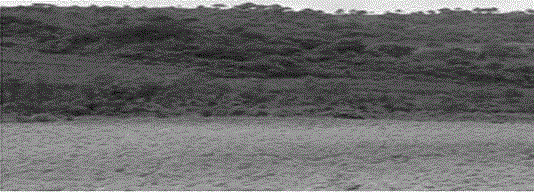Microbial agent and application in prospect of passivating heavy metals of soil
A technology of microbial agent and microbial composition, applied in the field of microbial composition, can solve problems such as insignificant improvement effect, limited soil/land adaptability, and reduced heavy metal content
- Summary
- Abstract
- Description
- Claims
- Application Information
AI Technical Summary
Problems solved by technology
Method used
Image
Examples
Embodiment 1
[0049] The production of embodiment 1 microbial bacterial agent
[0050] The present embodiment uses the following strains to prepare microbial agents: (1) Acetobacter striatum ( Acetobacter aceti ), (2) Beauveria bassiana ( Beauveria bassiana ), (3) Azospirillum brasiliensis ( Azospirllum brasilense ), (4) Nocardia cellulosus (Nocardia cellulans ), (5) Bacillus jelly-like (Bacillus mucilaginosus) , (6) Metarhizium anisopliae ( Metarhizium anisopliae ), (7) Trichoderma chrysogreen (Trichoderma aureoviride) , (8) Spirulina platensis ( Arthrospira platensis ), (9) Cellulomonas leguminosa ( Cellulomonas fabia ), (10) Bacillus stearothermophilus ( Bacillus sterothermophilus ), (11) Lactobacillus casei ( Lactobacillus casei ), (12) Methanobacterium formici ( Methanobacterium formicium ), (13) Methanobacter ruminantum ( Methanobacterium ruminantium ), (14) Thiobacillus thiooxidans ( Thiobacillus thiooxidans ), (15) Thiobacillus ferrooxidans ( Thiobacillus f...
Embodiment 2
[0053] Example 2 Production of Improver
[0054] Take cow dung with a water content of 65% (weight ratio) (if the water content is insufficient, you can add water) and crushed rice bran with particles smaller than 5mm, mix them evenly at a mass ratio of 85:15, and make the mixed cow dung and rice bran There is no agglomeration above 40mm.
[0055] Then, the mixture of 1 ton of above-mentioned cow dung and rice bran is mixed with the microbial inoculant produced in 1kg of Example 1, and heaped into the fermenter to form a compost heap. During the compost heap placement period, along with the fermentation process, the compost heap can naturally heat up. This fermentation heating process usually takes 2-3 days, and the compost heap can be turned 1-2 times during this period. Then, when the temperature of the compost heap rises to 65°C, turn on the turner to turn the compost heap to dissipate the heat generated by fermentation to ensure that the temperature does not exceed 70°C; ...
Embodiment 3
[0057] Example 3 Improvement example of secondary saline-alkali land in Tianjin Binhai New Area
[0058] Our previous patented technology has achieved good results on the coastal saline-alkali land of Tianjin Binhai New Area, but the effect on the secondary saline-alkali land caused by the degradation of non-coastal originally cultivated land is not significant, and the survival rate of seedlings is not ideal. Therefore, we use the new research and development Improvement experiments were carried out on similar secondary saline-alkali land adjacent to unimproved land (and desertification has occurred).
[0059] The test started on April 5, 2012, and was applied by Tianjin TEDA Landscape Construction Co., Ltd. and Tianjin Haibin Avenue Construction and Development Co., Ltd. (no alien soil was applied during the period), that is, the improvement agent particles prepared in Example 2 were mixed into the surface 20cm of soil , the mixing amount is 5kg per square meter, and the rot...
PUM
 Login to View More
Login to View More Abstract
Description
Claims
Application Information
 Login to View More
Login to View More - R&D
- Intellectual Property
- Life Sciences
- Materials
- Tech Scout
- Unparalleled Data Quality
- Higher Quality Content
- 60% Fewer Hallucinations
Browse by: Latest US Patents, China's latest patents, Technical Efficacy Thesaurus, Application Domain, Technology Topic, Popular Technical Reports.
© 2025 PatSnap. All rights reserved.Legal|Privacy policy|Modern Slavery Act Transparency Statement|Sitemap|About US| Contact US: help@patsnap.com



